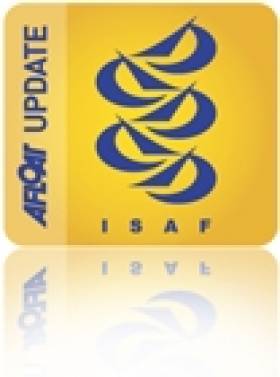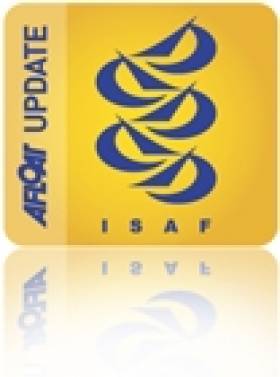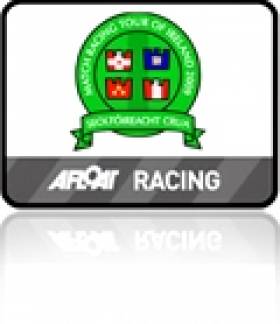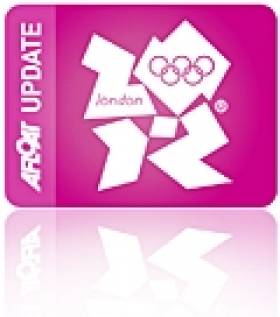Displaying items by tag: ISAF
No Recommendation for Mens Keelboat Poses Problem for Star
There was big news yesterday from the ISAF events committee meeting in Athens. The conference blog reports A 'packed session' heard the Events Committee's recommendation on the provisional Olympic events and equipment for 2016.
The Events Committee recommends:
- Board or kite-board for men and women - equipment evaluation
- One person dinghy men - Laser Standard
- One person dinghy women - Laser Radial
- Two person dinghy (skiff) men - 49er
- Two person dinghy (skiff) women - equipment evaluation
- Second one person dinghy men - Finn
- Two person mixed multihull - equipment evaluation
- Two person mixed dinghy with spinnaker - 470
- Women's keelboat - Elliott 6m
In so doing the committee's voting recommends taking out the men's keelboat. The second one person dinghy for women was the other option not to be selected.
The Committee's recommendations are of course just that. They will go to the ISAF Council for consideration this weekend. After Council vote they are then subject to confirmation at the ISAF Mid-Year meeting in May 2011.
Team Racers Head for Schull
This season's Irish Team Racing Association's (ITRA) National Team Racing Championships will be sailed in Schull on 13th - 14th November. As excitement mounts for next year's ISAF Team Racing Worlds, entries for this year's event have hit a record 21. With 4 teams travelling from the UK, 6 Youth teams, all from Munster, the two Royal St George teams, quarter finalists in this years UK Open (better known as the Wilson Trophy), plus the top college teams the competition should be intense.
To ensure that the competition is fair and sailed to the rules the umpire team includes 4 International Umpires, and includes umpires from the USA, the UK and even Dublin. Race organisation by the Fastnet Marine and Outdoor Education Centre will provide a full dress rehearsal for next year's event. A presentation of plans for the Worlds will be held on Saturday evening, but for competitors the major attraction will be the opportunity to sail the prototype of the specially designed boat that will be used next year.
Following this event the top Irish team racers will be invited to put themselves forward for selection for the teams to represent Ireland in both the Open and under 19 categories at the Worlds. ITRA will invite selected teams to a trial event to be held early in 2011.
For further information please contact: Gordon DAVIES, Secretary, Irish Team Racing Association. Ph; 086 150 1220
Finn Dinghy Vid Proves a Big Hit
After the Finn class released its video 'Sailing at its best' on YouTube last week, the response has been nothing short of phenomenal say the class officials. The video is part of a campaign to ISAF to keep the class an Olympic dinghy and the chips are down. To date more than 17,500 views have been recorded from more than 110 countries.
According to YouTube Insight statistics it is the second most viewed sailing video over the past month.
If you haven't seen it yet then check it out on the Afloat home page, scroll down to the bottom of this post or click HERE
The video is just a small part of the classes enhanced media plan. Class President Balazs Hajdu wrote earlier this year, "Today the sailing community realises that media appeal is not only about what you broadcast but also about how you broadcast. By making footage and coverage on Finn races so comprehensive, continuous, available and ground breaking, the International Finn Association brings a message that the Finn is not only a great Olympic class showing close, tactical and fair competition for fit, healthy and heavier elite sportsmen at the top of their game but also that the sport of sailing is able to deliver the media requirements of the IOC and the broadcasters."
Comments posted online about the 2 minute and 40 second video have backed this up
- Outstanding video. This is the pinnacle of dinghy sailing captured on video.
- Fantastic sailing video. This is really promoting Olympic Sailing
- Without a doubt one of the best sailing videos EVER.
- This is simply awesome! Never thought Olympic and small boats sailing is so cool. GREAT GREAT GREAT GREAT
- This is just fantastic! This is actually what we want to see from Olympic Sailing.
- The more I watch it the more I love it.
Die hard Finn fans will also be pleased to know that a longer version is in production and will be released later this month.
Bid to Hold Women's Match Racing Event on Belfast Lough
In a further boost for the fledgling match racing scene here, top Irish international Umpire Bill O'Hara is looking to have the ISAF Grade one women's match racing event held on Belfast Lough from his home port of Bangor from August 17 - 20 2011, straight after the Weymouth pre-Olympic event.
Finn Fights to Stay Olympic Dinghy Class
The Council are going to be asked to confirm six core events and these it is understood will most likely will be Men and Women Boards, Laser and Laser Radial and Men and Women Skiff.
Once these are selected the other four events will be considered and the Olympic Commission has suggested that 4 of the following 6 be picked:
Men's Heavyweight (Finn)
Women's other weight division in singlehanded
470 mixed
Multihull mixed
Men's Keelboat
Womens Keelboat
With the commission recommending equal gender balance, the Finn is unlikely to stay on its own and would need another women's singlehander to be selected.
The multihull is almost certain to get in, and there probably will be strong support for men and women's keelboat leaving it to be fought out between the Finn, the 470(mixed) and a Women's single handed dinghy.
Many believe the second decision will be deferred until May, but as one ISAF insider told Afloat.ie "I would be selling my Finn now if I had one".
Meanwhile the Finn class association don't see it that way at all. Under the threat of possible deselection the heavyweight men have been mobilising for a fight. Below are details of its recent campaign to stay an Olympic boat. Scroll down for nice Video too.
International Finn Association Press Release
The Finn - an outstanding display of sailing skills and athleticism
The Olympic Commission set up by ISAF delivered its preliminary report at the ISAF Conference in May 2010. Based largely on the Olympic Commission report, the ISAF Executive has since published two submissions which outline an exciting new future for the selection and decision making process for Olympic sailing events and equipment. The Finn is positioning itself to be part of that future.
Among the submissions are proposals for two sets of single-handed dinghies for both male and female sailors, to represent the weight and size distribution of modern youth of both genders in the most popular and low-cost type of dinghy sailing. The Finn class supports this idea.
Here are some of the arguments why Finn sailors think the Finn should remain part of the Olympic sailing equipment.
Tough challenge
The Finn is widely regarded as one of the toughest physical challenges in sailing. Sailors have to be tough, strong, fit, agile and athletic, while managing the mental aspects of racing at the highest level. The current world champion has a VOR max comparable with marathon runners and cross country skiers. Winning takes dedication, commitment and performing at the limits of fitness and endurance.
Appealing racing visuals
Modern looking rigs and hulls. Beautiful boat to sail with athletic, fit, muscular sailors. Requires extreme physical effort to sail well. Golden sail insignia for former world champions from 2011. Continuing research into sailor identification and country flags on sails. The free pumping rule has transformed downwind sailing into an absorbing display of skill, strength and athleticism.
Standard boats
Finns can be bought 'off-the-shelf' and be winning the next day. Hulls, masts and sails have all evolved into a level plateau of standardisation that means boats can compete on a level playing field. The strict class rules limits any experimentation into 'super' boats. Boats that are sold year after year are identical within reasonable limits and do not change perceivably over time.
Low costs
The Finn has one of the lowest running costs of any Olympic equipment. Average campaign costs from 35 sailors was just EUR 7,500 a year. One boat can last at least two Olympic cycles. Gear standardisation has meant reduced development costs. Gear is fast and ready to sail 'out of the box'. Increasing IHC and building control is reducing regatta measurement requirements, while 99% of checks at regattas pass first time.
Consistent equipment
Today's Finns are the most consistent, accurate and reliable Finns ever built. A modern Finn can be expected to be competitive for 6-8 years. The Finn is one of the most consistent hulls made today, thanks to very professional builders and strict measurement rules. Modern materials and new technologies means that boats supplied all over the world are as alike as possible in almost every way.
Easier rules
A proposal was passed at the 2010 AGM to lower the free pumping limit to 10 knots. This was aimed to make Rule 42 enforcement easier for judges and sailors. Under 10 knots there are much less opportunities for pumping and surfing. Identifying illegal activity is much easier, so less emphasis on judging decisions. Sailors are educated in Rule 42 – frequent clinics with the active involvement of judges and website coverage.
Worldwide culture
Local builders are producing low cost Finns for regional competition. Having been on the Olympic Programme since 1952, the Finn has the deepest culture and traditions of any dinghy class. Semi-professional class organisation oversees all activities. All levels of competition from Juniors (U21) to Masters (40+) and everything in between. Many countries are developing Junior programmes to fast track talented sailors.
Global spread
Finns are now built in the UK, Poland, Hungary, Czech Republic, Brazil, USA and South Africa, and there are other countries to come. Elsewhere, suppliers and dealers feed local fleets with new and used equipment. There are National Finn associations in more than 50 countries, while between 35 and 40 countries have internationally active sailors. Sailors from six continents attend major regattas. It is truly a global fleet.
Pinnacle event
The Finn is the pinnacle of singlehanded dinghy sailing for men, and the Olympics is the pinnacle event for the Finn. It provides a single step pathway from Optimist to Laser to Finn as the sailor's weight increases, but also allows the development of similar technical and physical skills in the sailor through a natural progression of similar equipment.
What the sailors say:
Jonas Høgh Christensen (DEN), 2006, 2009 World Champion, "The Finn is the most fun, challenging boat for strong, athletic sailors."
Giorgio Poggi (ITA), 2008 Finn Olympian, "The Finn is the class where the sailor must be complete."
Zach Railey (USA), Silver medalist, 2008 Olympics: "For single handed sailing the Finn is my only option given my weight and height to pursue my Olympic sailing dreams. With the technical and physical demands of the boat, the Finn is a pure test of a sailor's ability to react to the changing conditions on the race course under intense physical exertion."
Rob McMillan (AUS), "There is no other boat like it. The advent of free pumping brings a level of athleticism that is unique to the Finn."
Daniel Birgmark (SWE), 4th 2008 Olympics, "Sailing the Finn puts very high demands on the sailors athletic capacity as well as tactical and strategic skills. It's the perfect singlehander for sailors over 85kg."
Tomas Vika (CZE), one of many Finn sailors in their early 20s, "If you are more than 180cm tall and you want to work on your physical condition in a gym you will always weigh more than 85kg and that is the reason why Finn has to stay as an Olympic dinghy in future years."
Gus Miller (USA), Finn legend: "It's a very powerful demanding boat and you need a lot of initiative and attitude that you're going to do it yourself. Everyone realises the challenges is yourself not the other guys. The challenge is the boat and that understanding is the old idea "I love my competitor because he makes me better". The guys here have enormous respect because the challenge of sailing the boat is so great. If one guy figures it out then the others guys are glad for him that he's been able to do it."
Caleb Paine (USA), first Junior, 2010 Finn Gold Cup: "The Finn is the best class I have sailed in. There isn't I class I know of that has such a great sense of camaraderie. After my first international regatta I knew all the best Finn sailors in the world on a first name basis because they were open, friendly and supportive of the new kid. I think that this coherence of the class stems from the fact that the sailors often train together. This builds friendships as well as making everyone better."
Tapio Nirkko (FIN), 2008 Finn Olympian: "The Finn is already well developed in many areas. We're now in a situation when all the Finn equipment (hull, mast, boom, rudders, centreboards) are good quality and last a long time. When the market is competitive, the price of the equipment is also fair and resale value is good. That's an important factor to make a competitive Olympic project from a small country with a small budget. Now the actions made in the class to make equipment issues more transparent is important to keep Finn as a class where it's possible to make it to the top without having a monster budget."
Ed Wright (GBR), 2010 World Champion, on what makes the Finn class special for him: "For a start it's visually pleasant. The cost is low. I still use my first mast and it's still fast after five years. .... You can gain little advantages everywhere, but you have to treat the Finn with finesse, respect and grunt to keep it up to speed. The people in the class are great people and all hard competitors. Also there is so much history in the class, and never forget the many legends coming from the Finn."
Read more from these interviews and more about the Finn in the latest issue of FINNFARE out now
Top Ten Finish on the Cards for O'Dowd
Matthew O'Dowd clings to the ISAF Youth Worlds Top Ten going into the last day of racing today, having posted mixed results in a shifty day off Istanbul yesterday that allowed the boy's fleet put in three races. His tenth place overall means he remains the top Irish performer at the Turkish regatta at this stage. The top four are split by only four points going into the final day in the Laser Radials. The fleets are leaving the dock at the moment in 10 knots of northerly breeze.
420 girls Jane Butler and Jenny Andreasson managed a sixth yesterday, their best result to date, but followed it up with an OCS, leaving them in 17th overall. Sophie Murphy is 37th in the girls' Radial fleet, and Scott Flanigan and Cian O'Regan are 21st in the 420s after two races in the teens yesterday.
ISAF Seeks Olympic Reform
ISAF has published its report into how best to promote sailing as an Olympic sport. The Olympic Commission draft report (here) identifies making sailing a better spectator sport as a major priority for Olympic events from now on. The section of the report that deals with the Olympic regatta starts: "Through good live presentation, high quality production for television and on-line distribution, assisted by the application of the latest tracking and other technology, and broad coverage in other media, Olympic sailing is an attractive, quality sports entertainment property to the benefit of all stakeholders."
The report suggests that more thought should go into the sailing venue selection to guarantee clean water and consistent wind, and asks for a major investment in electronic tracking for boats on the race course to bring the games alive for viewers online and on TV.






























































